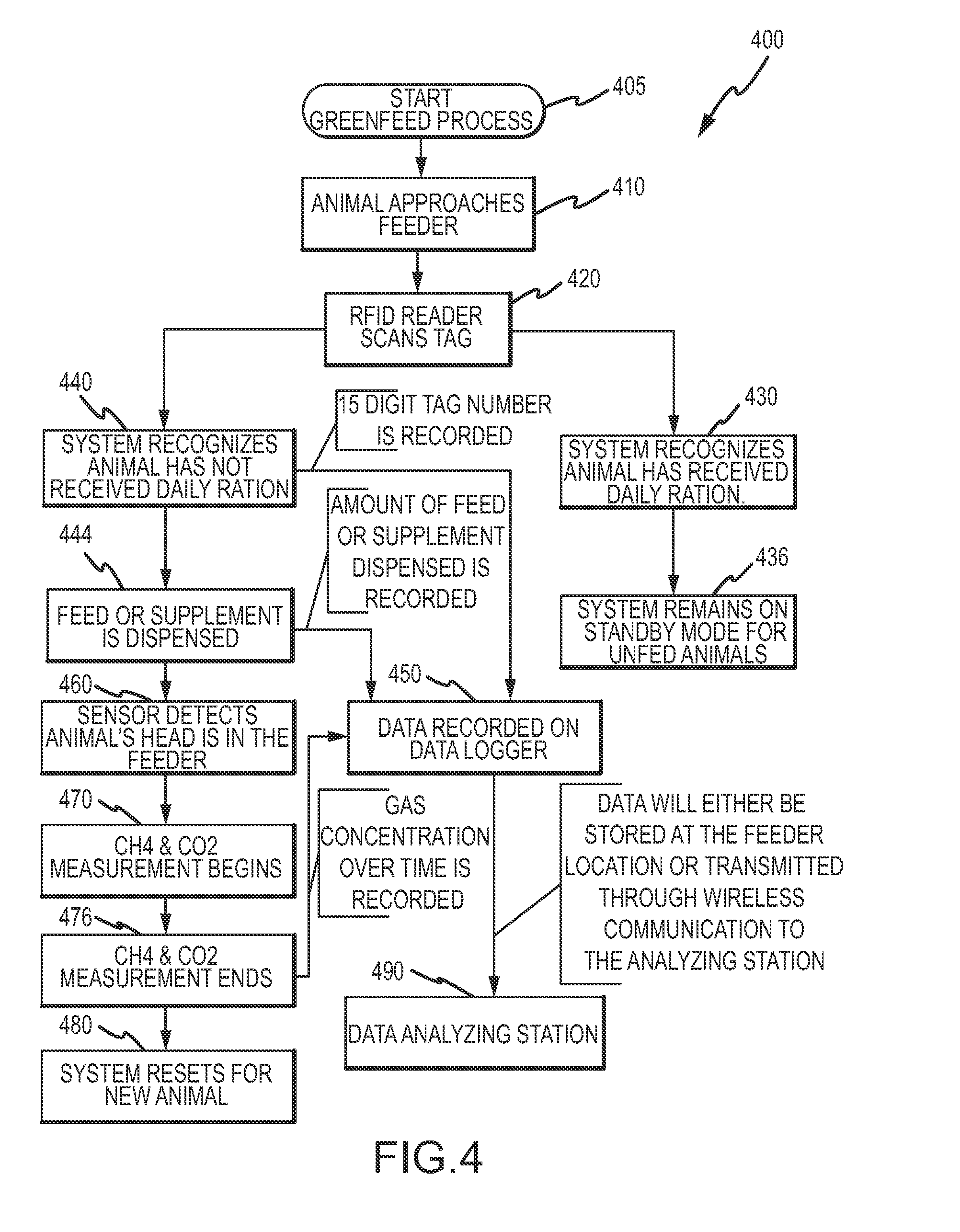Method and system for monitoring and reducing ruminant methane production
a technology for reducing ruminant methane and which is applied in the field of monitoring and reducing ruminant methane production, can solve the problems of reducing the number of ruminant methane emissions, so as to facilitate rapid remediation activities, facilitate the measurement of exhaled breath, and facilitate the rapid installation
- Summary
- Abstract
- Description
- Claims
- Application Information
AI Technical Summary
Benefits of technology
Problems solved by technology
Method used
Image
Examples
Embodiment Construction
[0071]The methods and systems described herein are expected to substantially reduce the parasitic GHG emissions from livestock and increase grazing efficiency. These techniques for monitoring and reducing / controlling ruminant methane production are further expected to have substantial economic potential. In addition to animal efficiency gains, actual methane emission reductions expected based on the wide range of literature values may, for example, produce GHG offsets worth from $1 to $20 (US dollars) per animal per year depending on diet and animal genetics.
[0072]FIGS. 1-3 illustrate exemplary components of one embodiment of a system 100 for monitoring and controlling ruminant methane production / emission. The illustrated system 100 may incorporate a ruminant ear tag reader 114 (e.g., a reader adapted for reading an RFID tag 208 placed on an ear of an animal 204) so that animals 204 with ear tags 208 can approach the station 110 and be identified with the shown RFID reader 114 that ...
PUM
 Login to View More
Login to View More Abstract
Description
Claims
Application Information
 Login to View More
Login to View More - R&D
- Intellectual Property
- Life Sciences
- Materials
- Tech Scout
- Unparalleled Data Quality
- Higher Quality Content
- 60% Fewer Hallucinations
Browse by: Latest US Patents, China's latest patents, Technical Efficacy Thesaurus, Application Domain, Technology Topic, Popular Technical Reports.
© 2025 PatSnap. All rights reserved.Legal|Privacy policy|Modern Slavery Act Transparency Statement|Sitemap|About US| Contact US: help@patsnap.com



